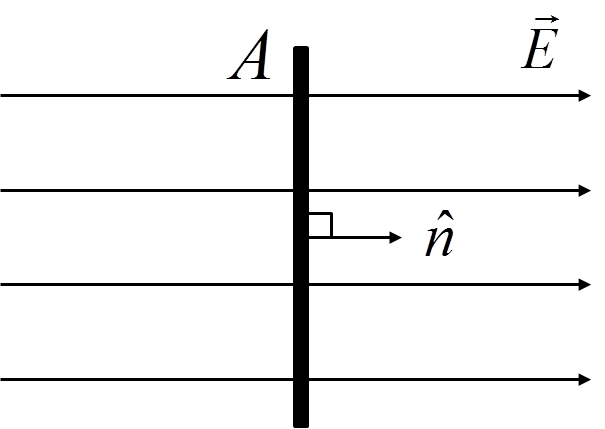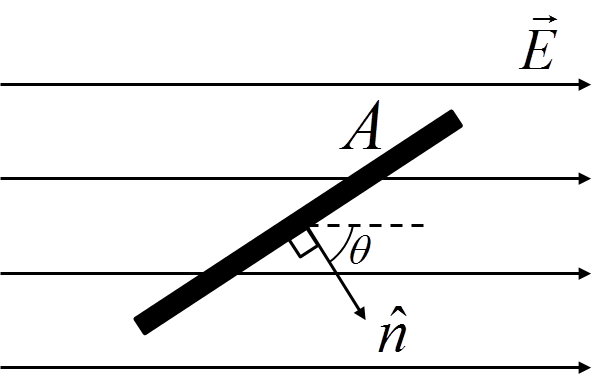What the flux?
Before we can move onto the next operation with del we need to be introduced to the mathematical quantity called flux, which is Latin for flow. The flux of a vector field is a measure of how much a vector field flows through a surface. It a scalar quantity and is often given the symbol \( \Phi \).
If a flat surface of area \(A\) is perpendicular to a constant vector field \( \vec{E} \), i.e. its normal \( \hat{n} \) is parallel to the field: $$ \Phi_E = \vert \vec{E} \vert A $$
$$ \Phi_E = \vert \vec{E} \vert A $$
 $$ \Phi_E = \vert \vec{E} \vert A \cos\theta = \vec{E} \circ \hat{n} A $$
$$ \Phi_E = \vert \vec{E} \vert A \cos\theta = \vec{E} \circ \hat{n} A $$
The subscript \( S \) reminds us that this is a surface integral across the surface \( S \) in question.
If we integrate across an entire closed surface such as a sphere, or a cube, we denote this with a closed integral \( \oint \) instead of \( \int \). A closed surface is anything which divides space into an inside and an outside.

